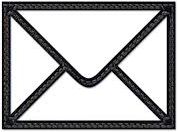SERVICE :: Service Tip #8
Switches vs. Senders and what they do
A common misunderstanding many people have is what a gauge sender and switch are and what job they do. We often times get requests for an "alarm sender" or sometimes just a "sender" for an alarm, which is incorrect.
Switches are the easiest thing to explain so we’ll start there. A switch is just that. It is a device that closes or opens (turns on or turns off) an electrical circuit. On an engine, these are typically two types: Pressure or Temperature. Therefore they close or open a circuit by Pressure or Temperature.
Pressure switches are specified by how much pressure they are set for in either Pounds per square inch (PSI) or Kilopascals (KPA), and by whether they are Normally Open (they close or turn on a circuit when reaching that pressure) or Normally Closed (they open or turn off a circuit when the pressure is reached). Most pressure switches come with a 1/8" NPT pipe thread, so there is usually no reason to specify that.
Temperature Switches are specified by what temperature they are set for in either Degrees Farenheit (F) or Degrees Centigrade or Celcius (C), whether they are Normally Open (NO) or Normally Closed (NC), and what size thread they are. Just like a Temp Switch, they turn on or off a circuit at whatever temperature they are set at. To complicate things, Temp Switches come in a variety of threads, from NPT to Metric, Whitworth, Straight Thread and a few in between. So you need to confirm that before ordering a Temp Switch.
Pressure switches are most often used in engine alarms to signal if oil pressure is lost, but they can be used in a wide variety of other applications. These include indicating if sea water pressure is lost, to supply power to windlass so it is only able to be used while the engine is running or to turn on an alternator after the engine is running.
Temp Switches are typically used to activate engine alarms or Generator auto shutdowns. But they are also used in other applications such as turning on and off a blower or fan in an enclosure or engine room, much like a car engine does for an electric radiator.
Back to Service tips...
Tel: +1(284)494-2830/440-2830
Email: info@partsandpower.com
Tel: +1(284)494-2830/440-2830
Email: info@partsandpower.com
Copyright © 2007-2024 Parts & Power Ltd., All rights reserved.
Website by: GL Solutions
 Join us on Facebook
Join us on Facebook
 Visit our Blog (News)
Visit our Blog (News)
 Follow us on Twitter
Follow us on Twitter
 Email us
Email us